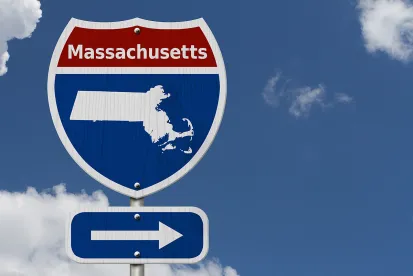The road to net-zero emissions in the Commonwealth of Massachusetts is not a well-defined highway. In fact, at times it feels more like a barely discernible path through deep forested woods. The recent abandonment of the Transportation and Climate Initiative (TCI) in November 2021, less than a year after its announcement, stands as a clear reminder that there remains a vast divide between the ambitious 2050 net-zero emissions goal of the Commonwealth’s historic climate legislation (Chapter 8 of the Acts of 2021 or the Climate Act) and the regulatory changes necessary to achieve it. However, just as one proposed tool to clear the way gets dropped, Massachusetts regulators take up another to keep the track moving forward.
On February 8, 2022, the Massachusetts Department of Energy Resources (DOER) released a Straw Proposal containing proposed updates to the existing Stretch Energy Code and an outline for the new Specialized Opt-In Stretch Energy Code for public comment. As previously reported in this blog, some of the more controversial items in the Climate Act were the provisions to incorporate requirements into the state’s building code to advance construction and/or retrofitting of buildings with energy systems designed to reduce emissions. According to the Straw Proposal, over half of the emissions necessary to achieve net zero by 2050 must come from vehicles and residential space heating.
The DOER proposals are based on studies commissioned in 2019 to evaluate different building code standards specific to the Massachusetts climate, based on building type variety, up-front costs, operational costs, and total cost of ownership. A primary conclusion of those studies was a movement towards electrification in residential and commercial buildings as a critical step to achieve the necessary emission reductions in the Commonwealth.
With the addition of the Specialized Opt-In Stretch Energy Code, Massachusetts will now have a three tier building code system. In the first tier (the base building code), and under the Green Communities Act of 2008, Massachusetts is required to update its base building code every three years to be consistent with the most recent version of the International Energy Conservation Code (IECC). The Board of Building Regulations and Standards (BBRS) plans an update of the full set of building codes in 2022, which will include an update of the base energy code to the IECC 2021 with Massachusetts-specific amendments. The new base energy code is expected to go into effect in January 2023.
In the second tier, DOER, in consultation with the BBRS, is updating the existing Stretch Energy Code which is a requirement for municipalities that are Green Communities. 299 of the Commonwealth’s 351 municipalities have adopted the Stretch Energy Code. Under both the base energy code and the existing Stretch Energy Code, homes qualify for state and federal incentives if they achieve a Home Energy Rating System (HERS) score of 55 or lower, measured on a per unit basis, compared to a 2006 baseline equivalent to a HERS score of 100.
In the new third tier, DOER is developing the new Specialized Opt-In Stretch Energy Code alongside the tier 2 update to the existing Stretch Energy Code. Section 101 of the Climate Act requires DOER to establish a new opt-in net-zero stretch building code within 18 months of the effective date of the Act (December 2022). The new code will include net-zero building performance standards and a definition for what a “net-zero building” is. The specialized code must:
-
Include net-zero building performance standards (may be phased in based on building type, e.g. residential, commercial, and multi-family);
-
Include a definition of net-zero building (does not necessitate onsite or offsite renewables nor the assumption that an individual building is net-zero energy);
-
Be designed to achieve Massachusetts GHG emission limits and sub-limits (the Executive Office of Energy and Environmental Affairs (EEA) must establish specific 2025 and 2030 emissions reduction targets for the buildings sector by July 2022).
As was the case with the passage of the Climate Act itself, however, there remains some disagreement between lawmakers and the Commonwealth’s executive agency leadership on the methodology to achieve net-zero emissions, but not on the goal itself. In a Senate oversight hearing on February 15, 2022, some members of the Massachusetts Senate Committee on Global Warming and Climate Change expressed frustration with the Straw Proposal’s proposed definitions of net-zero buildings and the lack of express mandates to require fossil-fuel-free construction, as opposed to incentives and performance standards for such construction.
Similar concerns were raised by special interest groups as well. Local environmental proponents echoed the frustrations outlined by lawmakers in the February 15 hearing. Development groups, however, stating concerns for impacts to the state’s economy, continue to express wariness on the development of the new code and the potential to include outsized impacts on affordable housing, which is already strained by high costs of living in the state.
A key consideration is the impact on environmental justice communities in the Commonwealth. Section 6 of the Climate Act requires that the EEA establish programs to reduce emissions of greenhouse gases and promulgate regulations regarding sources or categories of sources that emit greenhouse gases in order to achieve the greenhouse gas emissions limits and sublimits and “shall achieve [the] required emissions reductions equitably and in a manner that protects low- and moderate-income persons and environmental justice populations.” With a statutorily mandated focus on environmental justice populations in the state under the Climate Act, it remains to be seen how these competing concerns can become adequately reconciled. The continued controversy over the development of the new code underscores the difficulties in achieving such ambitious climate goals in such a confined time period.
Regardless of how the Specialized Opt-In Stretch Energy Code becomes finalized, however, the development of the Straw Proposal itself is a meaningful step in achieving the necessary reductions in statewide GHG emissions, which are required to have at least a 50 percent reduction by 2030 to achieve net zero by 2050. The DOER will be hosting a series of public meetings between February 28 and March 8 to further review the code and public comments. The deadline for comments on the Straw Proposal is 5:00pm EST on March 9, 2022.





 />i
/>i

